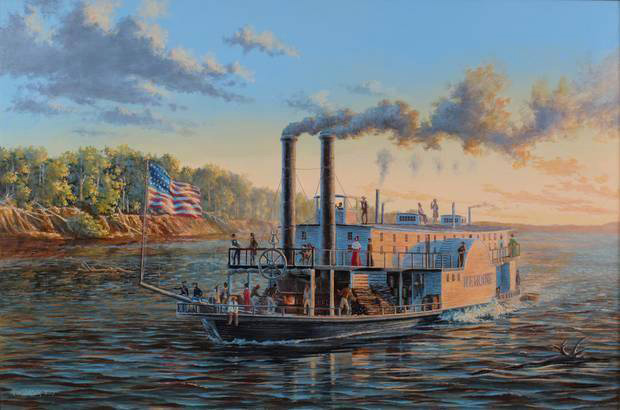
Steamboat Heroine
Printable Version
The role of transportation and trade drastically changed the landscape of America. The market and transportation revolutions changed American economics and increased migration to the West. Steamboat transportation allowed western farmers to participate in the selling of goods on the market. Steamboats helped to develop a system of trade that altered the economy of the West and increased settlement, even in states like Oklahoma.
The discovery of the sunken steamboat, Heroine, in Oklahoma’s Red River in 1990 provided evidence as to the role of steamboats in Oklahoma and how they transformed the region. The excavation of Heroine by the Oklahoma Historical Society and Texas A&M University provided archaeologists and historians with information on Heroine and how it operated. When Heroine sank in 1838, it was carrying supplies to the soldiers at Fort Towson in Indian Territory, present-day Oklahoma. Steamboats traveling to Oklahoma mostly carried supplies for the military forts in the region, but they also spread the culture developing in the United States beyond its borders.
Steamboats helped transform the West and Oklahoma through trade and cultural diffusion. In the following pages, you will learn about the impact of steamboats on the West, the opportunities and challenges of steamboat operation, the experience of the crew and passengers aboard steamboats, and the story of the Heroine.

Steamer Heroine on the Red River, 1838, Peter Rindlisbacher (Steamboat Heroine Collection, OHS).

